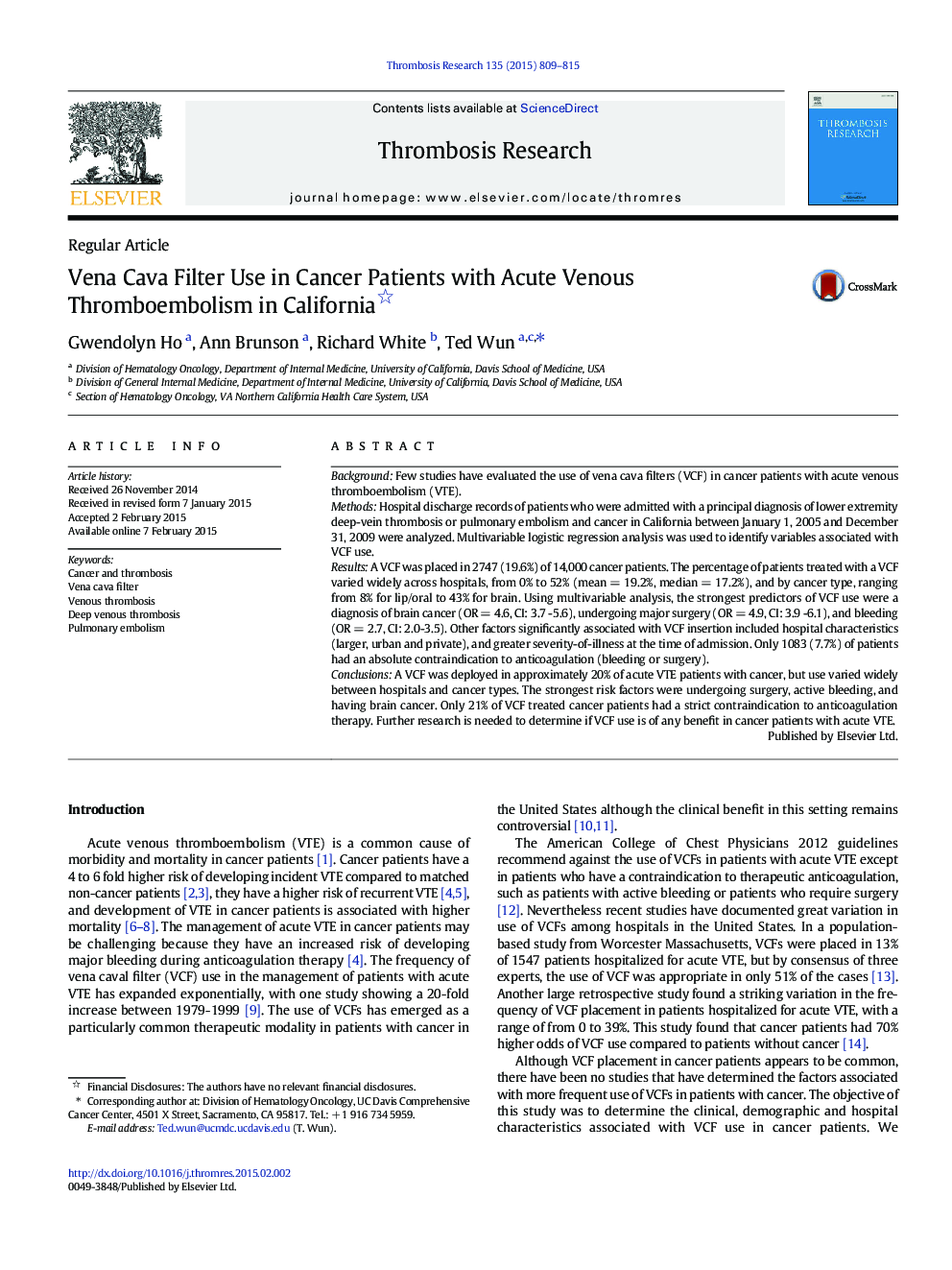| کد مقاله | کد نشریه | سال انتشار | مقاله انگلیسی | نسخه تمام متن |
|---|---|---|---|---|
| 6001547 | 1182953 | 2015 | 7 صفحه PDF | دانلود رایگان |

- We examined vena cava filter use in patients with venous thrombosis and cancer.
- In 14,000 patients with thromobosis and cancer, about 20% had a filter placed.
- Use of vena cava filters varied widely across hospitals and by cancer type.
- Less than 10% of patients had a strict contraindication to anticoagulation.
BackgroundFew studies have evaluated the use of vena cava filters (VCF) in cancer patients with acute venous thromboembolism (VTE).MethodsHospital discharge records of patients who were admitted with a principal diagnosis of lower extremity deep-vein thrombosis or pulmonary embolism and cancer in California between January 1, 2005 and December 31, 2009 were analyzed. Multivariable logistic regression analysis was used to identify variables associated with VCF use.ResultsA VCF was placed in 2747 (19.6%) of 14,000 cancer patients. The percentage of patients treated with a VCF varied widely across hospitals, from 0% to 52% (mean = 19.2%, median = 17.2%), and by cancer type, ranging from 8% for lip/oral to 43% for brain. Using multivariable analysis, the strongest predictors of VCF use were a diagnosis of brain cancer (OR = 4.6, CI: 3.7 -5.6), undergoing major surgery (OR = 4.9, CI: 3.9 -6.1), and bleeding (OR = 2.7, CI: 2.0-3.5). Other factors significantly associated with VCF insertion included hospital characteristics (larger, urban and private), and greater severity-of-illness at the time of admission. Only 1083 (7.7%) of patients had an absolute contraindication to anticoagulation (bleeding or surgery).ConclusionsA VCF was deployed in approximately 20% of acute VTE patients with cancer, but use varied widely between hospitals and cancer types. The strongest risk factors were undergoing surgery, active bleeding, and having brain cancer. Only 21% of VCF treated cancer patients had a strict contraindication to anticoagulation therapy. Further research is needed to determine if VCF use is of any benefit in cancer patients with acute VTE.
Journal: Thrombosis Research - Volume 135, Issue 5, May 2015, Pages 809-815